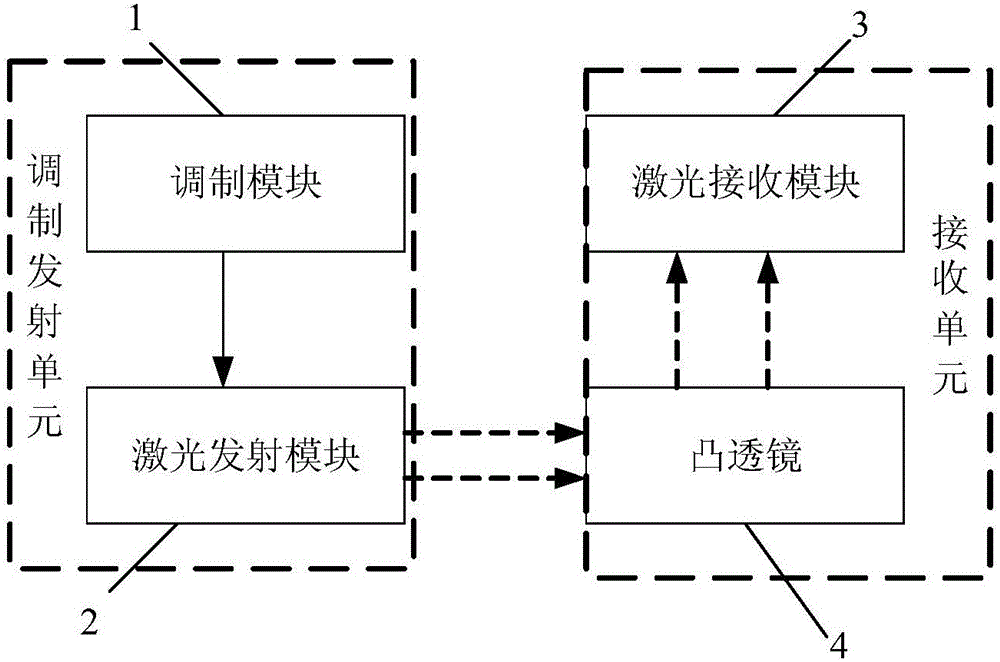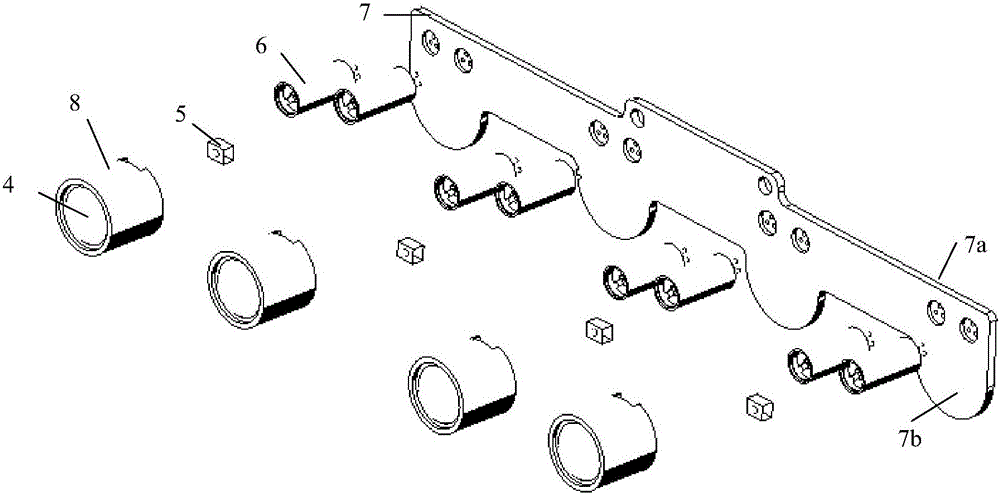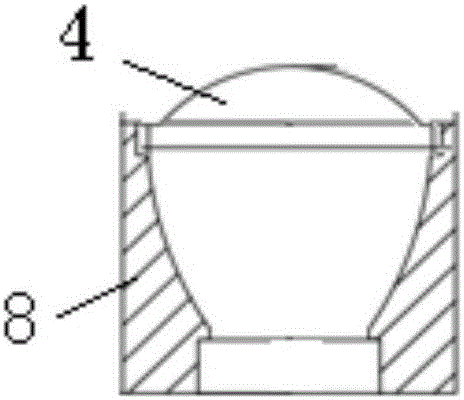Laser transmit-receive sensor with fixed modulation frequency
A technology of laser transceiver and frequency modulation, which is applied in the field of sensors, can solve the problems of mutual influence and interference of data, inability to guarantee accuracy, and deviation of real objects, etc., and achieve the effects of making up for losses, enhancing anti-interference ability, and ensuring reliability
- Summary
- Abstract
- Description
- Claims
- Application Information
AI Technical Summary
Problems solved by technology
Method used
Image
Examples
Embodiment Construction
[0033] The present invention will be further described below in conjunction with accompanying drawing:
[0034] Such as figure 1 The shown laser transceiver sensor with a fixed modulation frequency includes a PCB board 7 and at least one laser transceiver circuit, and the number of laser transceiver circuits is set according to needs.
[0035] Such as figure 1 As shown, each laser transceiver circuit includes a modulation transmitting unit and a receiving unit. The modulation and emission unit includes a modulation module 1 and a laser emission module 2; the modulation module 1 is used to generate a fixed modulation frequency (for example: 180kHz square pulse wave); the laser emission module 2 generates a regular laser signal according to the modulation frequency , the laser emitting module 2 is electrically connected to the modulation module 1 . The receiving unit includes a convex lens 4 and a laser receiving module 3; the convex lens 4 is used to receive and amplify the ...
PUM
 Login to View More
Login to View More Abstract
Description
Claims
Application Information
 Login to View More
Login to View More - R&D
- Intellectual Property
- Life Sciences
- Materials
- Tech Scout
- Unparalleled Data Quality
- Higher Quality Content
- 60% Fewer Hallucinations
Browse by: Latest US Patents, China's latest patents, Technical Efficacy Thesaurus, Application Domain, Technology Topic, Popular Technical Reports.
© 2025 PatSnap. All rights reserved.Legal|Privacy policy|Modern Slavery Act Transparency Statement|Sitemap|About US| Contact US: help@patsnap.com



